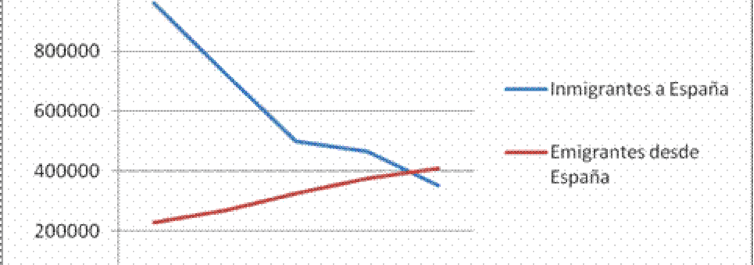The following article is archived and is no longer considered up-to-date. Please interpret its content in the context of the publishing date.

ARCHIVED
Global Job Market: Spanish Professionals Move to South America
Read a summary using the INOMICS AI tool
Source: Estadística de Variaciones Residenciales y Estimaciones de la Población Actual, INE.
Patterns in immigration around the world naturally ebb and flow with time. In South America however, the trend in recent decades has been distinctly for more individuals to take their leave of the continent than to move to it. But now in the context of the global economic crisis and the problems in the euro zone, the migration patterns in this region are notably changing, and the destination of migrants is now shifting from well-known countries in the developed world to countries with emerging economies, especially in South America.
The United States and Europe are no longer the only favored destinations for skilled migrants. Instead, many European residents, both foreign and national, are now looking to attain a better economic status for their families in South America.
One of the most notable cases involves Mexican immigrants in the United States. In recent years the number of Mexicans who left their homeland to continue the dream of a better future in the USA is 50% lower than in 2010. Possible causes of the phenomenon are the decline in the U.S. economy, exhausting paperwork to gain residence in the US, and the decreasing birth rate in Mexico.
Moving to the south of the continent, the situation appears to be even more striking: the flow of migration to Latin America shows that the southern tip of the continent is a major destination for foreign workers. Particularly Argentina, Chile and Brazil are seen as highly attractive for skilled immigrants both from neighboring countries and Europe. Some of the reasons for this include job market opportunities, a common language and the cultural similarities with Europe in the case of immigrants from the old continent.
Spanish nationals represent the largest group of migrants to this region. In the last two years approximately 110,000 Spanish people left their home to move abroad, about two-thirds of which preferred developed countries, such as United States, France, Germany or Switzerland, while about 33,540 Spanish migrated to a South American country. Due to the euro zone crisis, Spain is a less attractive environment for business and economic development than it used to be, with recovery prospects manageable only in the long term. This has been enough to cause migration of thousands of highly skilled Spanish professionals in search of employment and progress in countries like Argentina, which has become one of the favourite destinations. Furthermore, due to the difficult economic situation, many Argentinians who had previously lived in European countries decided to return to their home country. Between 2004 and 2012 the applications for residence permits in the country exceeded 1.5 million, according to the Department of Immigration.
Most of the migrant population are Spanish young professionals aged between 25 and 35, whose priorities are based on professional autonomy and development prospects of a career in a company. Such migration profiles result in bringing an increased competitive level in the labour market of the region.
The migration trends within South America and between European countries and Latin America represent an encouraging surprise for the developing continent. The European case registers strong criticism due to the immense loss of Spanish talent, and the process of a “brain drain” to the new world. The projections in the level of economic growth for Latin American regions have increased considerably thanks to the flow of young professionals from Europe and the regional talent who had moved to other places and are now returning home.
No one knows for sure if the current migration to developed countries will return to the same levels it was at some years ago. In the time of crisis nothing is certain, and what remains for Latin America is to adapt to changes in society on the political, social and economic levels, with the shifting demographic and labour market trends in focus.
-
- Conference
- Posted 2 weeks ago
EcoMod2026 International Conference on Economic Modeling and Data Science
Between 8 Jul and 10 Jul in Esch-sur-Alzette, Luxembourg
-
- Workshop
- Posted 1 week ago
3rd Development Economics Workshop (DEW 2026) – Durham University Business School
Between 9 Jun and 10 Jun in Durham, United Kingdom
-
- PhD Program
- Posted 1 week ago
Graduate Program in Economics and Finance (GPEF) - Fully funded Ph.D. Positions
Starts 1 Sep at University of St.Gallen in Sankt Gallen, Switzerland














